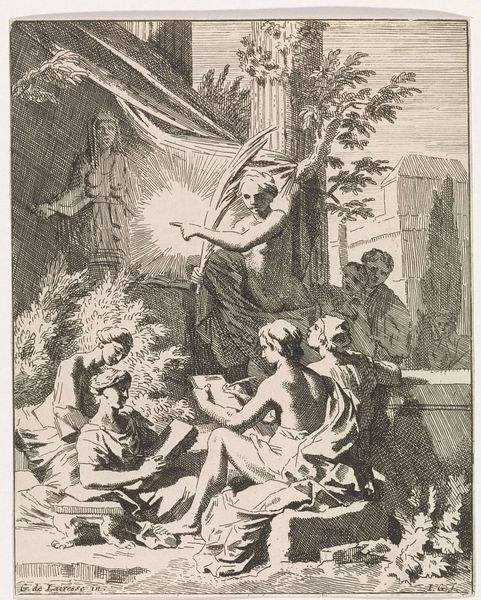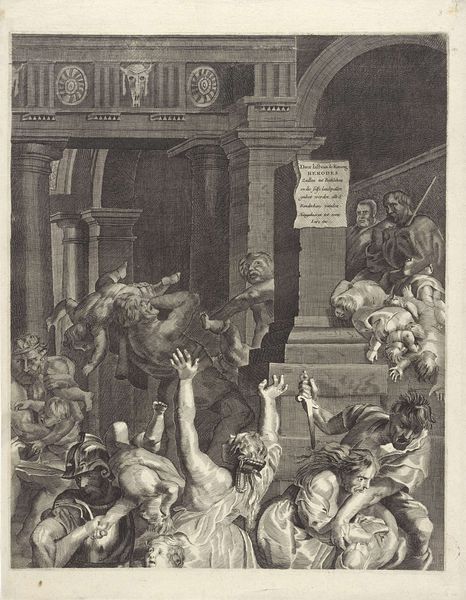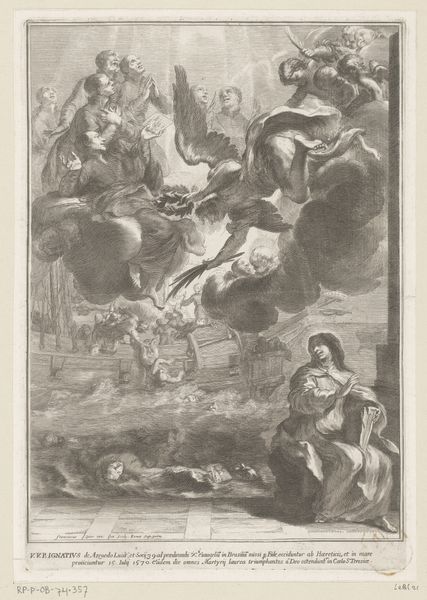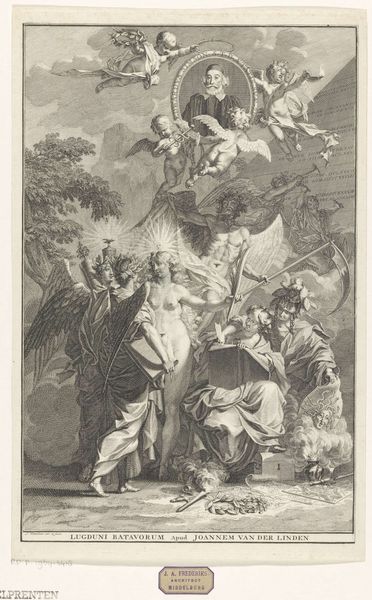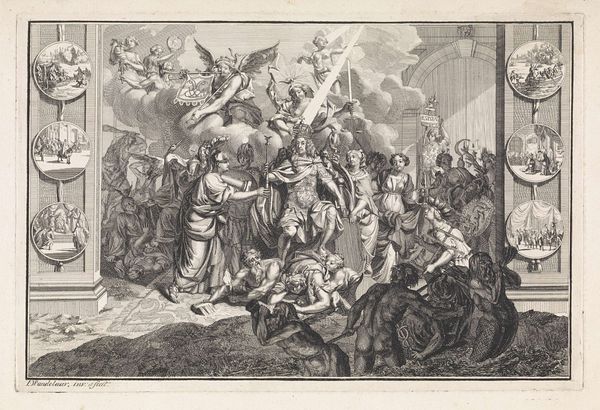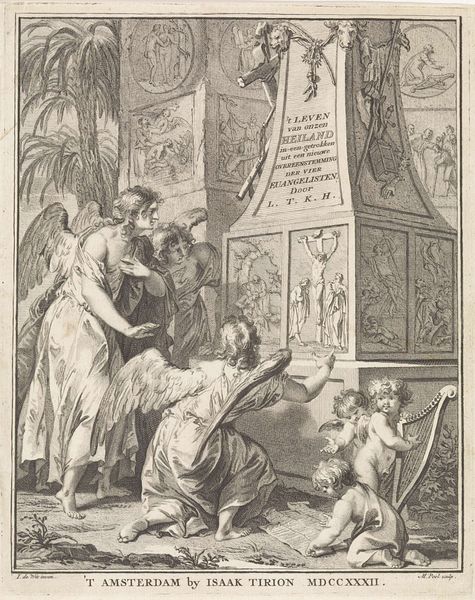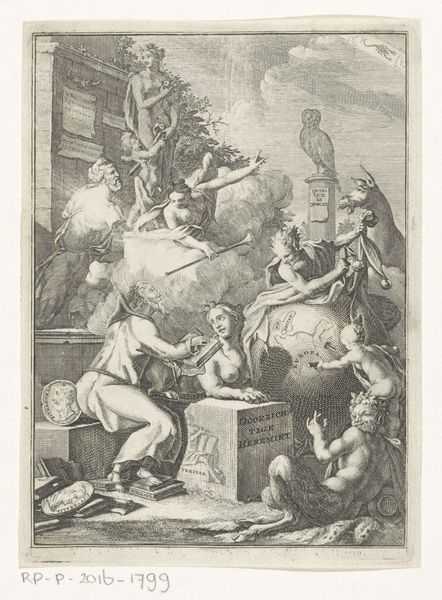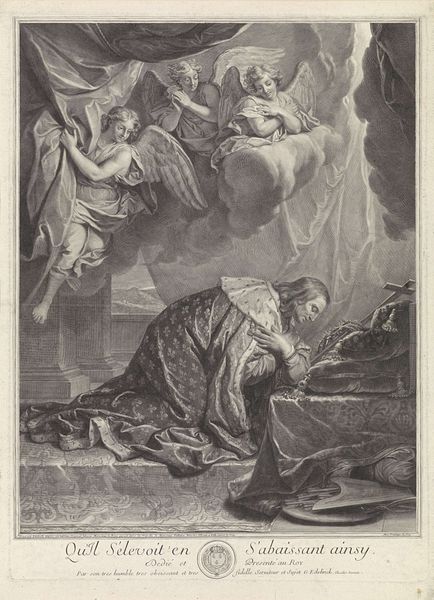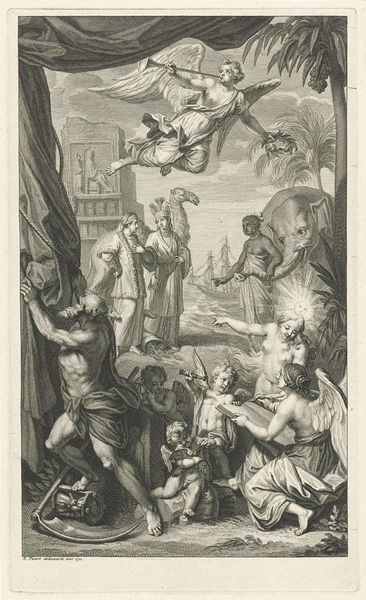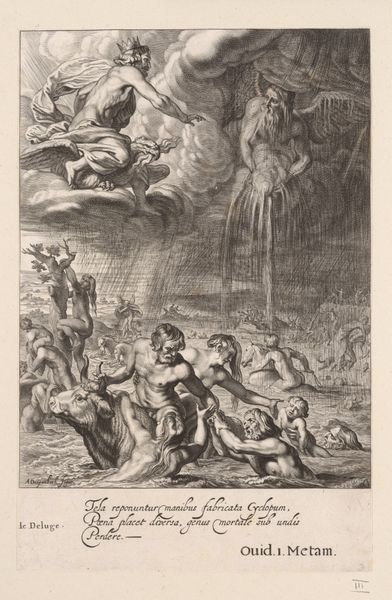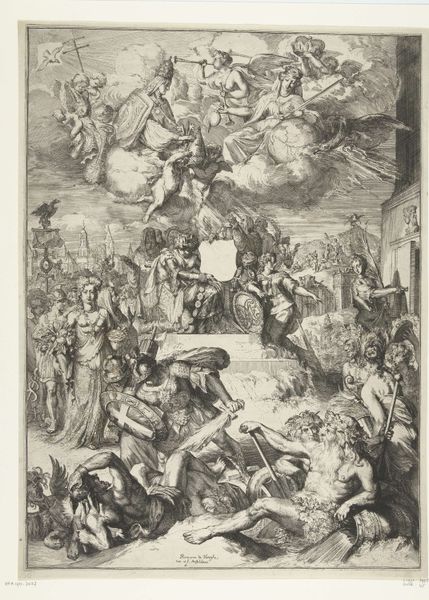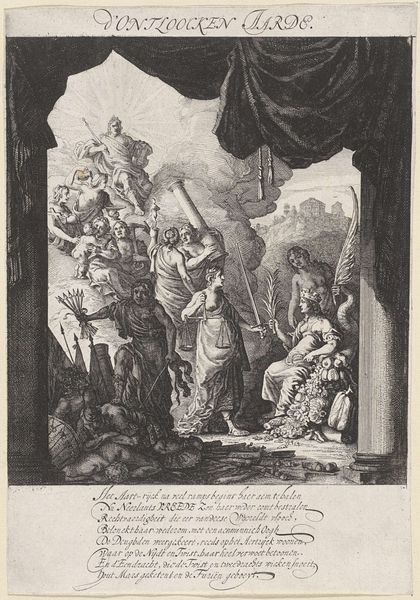
print, ink, engraving
#
narrative-art
#
baroque
# print
#
pen sketch
#
figuration
#
ink
#
history-painting
#
engraving
Dimensions: height 258 mm, width 204 mm
Copyright: Rijks Museum: Open Domain
Jan van Orley created this print of ‘The Adoration of the Shepherds’ using etching, a printmaking technique that was widespread in 17th and 18th century Europe. The process begins with a metal plate covered in a waxy, acid-resistant ground. The artist then scratches an image into the ground with a pointed tool, exposing the metal underneath. When the plate is dipped in acid, the exposed lines are ‘bitten’ or etched into the surface. The longer the plate remains in the acid, the deeper the lines. Once the ground is removed, the plate is inked and wiped clean, leaving ink only in the etched lines. Paper is then pressed against the plate, transferring the image to the page. The beauty of etching lies in its capacity to render fine details, as you can see in the angels hovering above. But it’s important to remember this wasn’t only an artistic process; it was also an industrial one, requiring skilled labor, expensive materials, and access to printing presses. Considering these material factors helps us to understand not only the image itself, but also the world in which it was made.
Comments
No comments
Be the first to comment and join the conversation on the ultimate creative platform.
